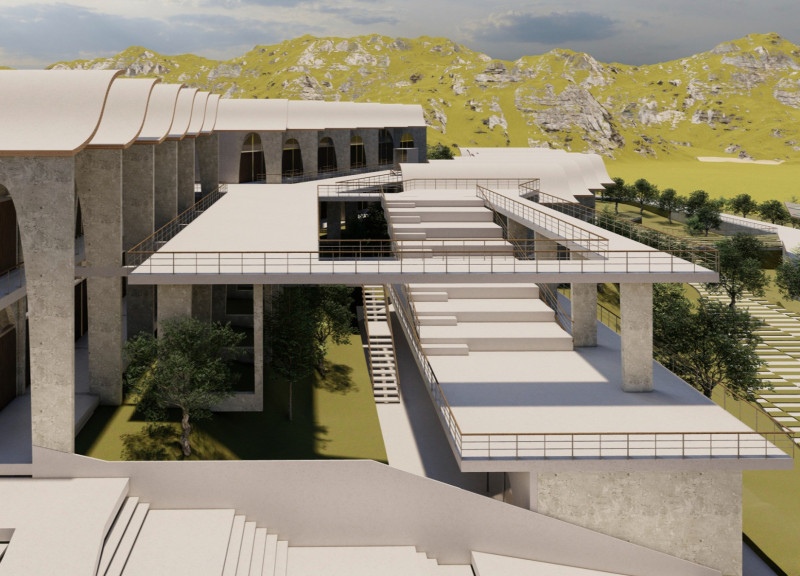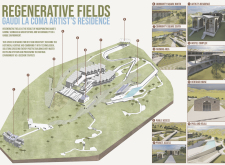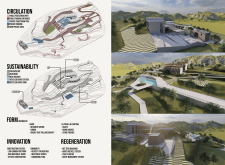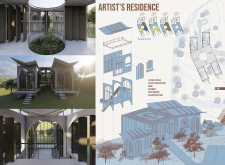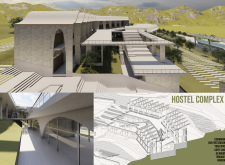5 key facts about this project
The primary function of the residence is to provide adaptable living and working environments for artists, complemented by facilities for visiting guests. It comprises several distinct zones, including an artist’s residence, hostel facilities, community spaces, and a farming area. Each of these areas features careful spatial planning to facilitate creativity and collaboration.
The artist’s residence emphasizes flexibility, with open floor plans and large windows that position the interior spaces in direct relation to the landscape. The hostel component encompasses numerous guest rooms, shared kitchens, and communal spaces designed to foster interaction and collaboration among residents and visitors. Community squares are strategically placed within the project to serve as focal points for events and gatherings, encouraging social engagement.
The integration of agricultural spaces serves both functional and educational purposes, focusing on local food production and sustainable practices. This component enhances the self-sufficiency of the residence and aligns with the overall environmental goals of the project.
The design of the Regenerative Fields project features several unique approaches that set it apart from conventional residential and community spaces. The extensive use of curvilinear forms and natural materials echoes the architectural style of Antoni Gaudí, infusing the project with a sense of timelessness and respect for nature. The varied rooflines and fluid shapes create a dynamic visual composition while maintaining functionality.
Material selection plays a critical role in the project. Reinforced concrete provides structural stability, while wood adds warmth and a tactile quality to the interiors. The choice of stone reflects the local vernacular architecture, honoring historical building practices. Large glass elements promote natural light and facilitate connections to the environment, further enhancing the sustainable aspects of the design.
Sustainability is a foundational aspect of this project. The design incorporates renewable energy sources such as photovoltaic panels and geothermal heating, reducing dependence on nonrenewable resources. Water recycling systems manage water consumption effectively, demonstrating a commitment to responsible resource use.
In summary, Regenerative Fields - Gaudí La Coma Artist’s Residence exemplifies a thoughtful integration of architecture, sustainable practices, and community engagement. Those interested in gaining a deeper understanding of this project should explore the architectural plans, sections, and detailed designs to appreciate its comprehensive approach to contemporary living. The project serves as a model for future developments that seek to blend artistic expression with environmental responsibility.


